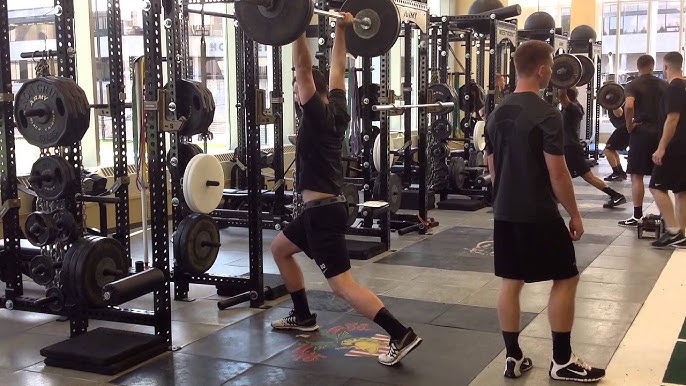Spring 2024
Functional tactical training adds muscular strength and endurance

Physical fitness trends evolve from decade to decade and the general population of society embraces one or the other as more progressive thinking assists us in more functional exercises for everyday life.
However tactical athletes may need to be more functionally fit for optimal job performance compared to those in the general population who may not have such a physically demanding job. Tactical athletes must exhibit a broad range of physical adaptations or traits that may be called upon at a moment’s notice.
With functional training, it really is about convenience and access to a well-thought-out program. During a functional program, the idea is to train the body in all three planes of anatomical motion—the sagittal, frontal, and transverse planes. The sagittal plane separates the left and right sides of the body, the frontal (or coronal) plane separates the anterior and posterior, and the transverse plane separates the upper (superior) and lower (inferior) halves. All tactical athletes need to be able to efficiently move their bodies in these planes so they are fully equipped to proficiently maneuver through any physically demanding task they encounter. Not only does training functionally accomplish these objectives but, it also assists the operator in preventing musculoskeletal (MSK) injuries.
What is appealing to many is the fact that functional training can be accomplished with or without weights. Additionally, functional training will improve your balance, stability, flexibility, and coordination. There is no focus on one single muscle but rather several muscle groups or compound exercises that deliver a total body workout. Functional training will get you back to where you once were or want to be. In essence, your overall quality of life will improve.
Bodyweight or Resistance Training?
A simple and effective routine can be devised for bodyweight exercises without weights. A routine can be devised of push-ups, sit-ups, reverse crunches, flutter kicks, front and rear lunges, air squats, jumping jacks, and planks to name a few. You can do isolated sets with a certain repetition range and, generally, a 30-60 second rest period between each exercise to capitalize upon the physiological adaptations of building muscular endurance.
Muscular endurance is crucial for tactical athletes who find themselves lifting and moving external loads or resisting forces repeatedly throughout their daily jobs. Functionally training with only bodyweight will assist the attributes to further your strength-building repetitions physically. Therefore, you can take the same exercises mentioned above and, upon becoming better conditioned for a better cardiovascular workout, an individual can devise a program with no rest between sets with continuous movement. One example would be training in Zone 2, or 60-70% of maximal heart rate, and improvement would be seen in the tactical athlete’s oxidative energy zone which generally can be activated partially after two minutes of exercise but primarily at three or more minutes of continuous exercise.
Subsequently, progression can be achieved still using one’s body weight, but by introducing fixed equipment such as pull-up bars for pull/chin-ups, dead bar hangs, benches for dips, push-ups, bench squats, and TRX bands.
As far as functional resistance training is concerned, we can utilize any form of weight-bearing equipment or external load for more of a strength-building stimulus and muscular endurance. An example of resistance training for muscular endurance would be to conduct a bench press, squat, or bicep curl for generally 12+ repetitions and more. This repetition count correlates to an intensity of less than 67% of your one rep max (1RM) which would be at a maximal force. This training assists the tactical athlete by stressing the glycolytic energy system by limiting the time your muscles’ energy stores can replenish. Therefore, the body then begins to handle and adapt better to stress. Muscular endurance will make physiological adaptations that improve your anaerobic and aerobic capacity. We can use barbells, dumbbells, kettlebells, and resistance bands. Resistance training exercise techniques that are ideal for functionality include but are not limited to bench press, Romanian/trap bar deadlift, front/back/goblet squat, farmer’s walk, push press, landmine press, and Olympic lifts (hang clean, power clean, power snatch).
» ALSO SEE: 3 common questions first responders ask about nutrition
Furthermore, the incorporation of unconventional methods is really dynamic for the tactical athlete and will improve them for functionality, optimal human performance, and career longevity. These methods include the use of sandbags, heavy bags, water jugs, sledgehammer tire hits, one-arm or unilateral training, rucksack walks or marches, and weighted vest training.
Daniel J. Borowick, MS, CSCS, has over 27 years of tactical experience. Currently, he is a strength and conditioning specialist serving in the U.S. Army’s (H2F) Holistic Health and Fitness Program. You can reach him via Domexstrengthandfitness@gmail.com.



